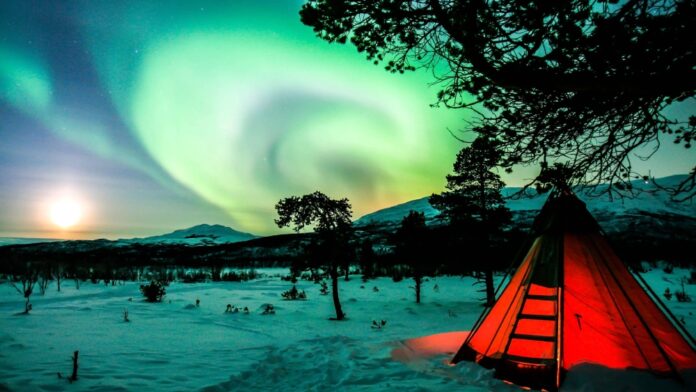Seeing the Northern lights is on the bucket list of thousands of travel enthusiasts around the world. But before chalking out the final plan, you should have a basic idea about how to go and what to expect.
Here are some things you should know about the Northern lights.
What are the Northern Lights?
The Northern Lights, also known as the Aurora Borealis, are a natural light display that graces the polar regions with enchanting hues of green, pink, purple, and blue. This breathtaking spectacle is caused by the interaction between charged particles from the sun and the Earth’s magnetic field. Understanding the science behind this phenomenon and planning the right time to witness it can turn the Northern Lights experience into a once-in-a-lifetime adventure.
How does it work?
The Northern Lights result from the collision of charged particles, mostly electrons and protons, with the Earth’s atmosphere. When the solar wind – a stream of charged particles from the sun – reaches the Earth’s magnetosphere, it excites the atoms and molecules in the atmosphere. As these particles return to their normal state, they release energy in the form of light, creating the breathtaking hues that dance across the night sky.
Best time to visit
The best time to witness the Northern Lights is during the winter months, from late September to early April, when the nights are long, and the skies are dark. Conveniently, this is the time when most of us want to go on fun vacations. Additionally, the equinoxes in March and September are known for increased auroral activity. Locations closer to the magnetic poles, such as Scandinavia, Iceland, Alaska, Canada, and Russia, offer prime viewing opportunities.
Factors affecting visibility
Solar activity – The intensity of the Northern Lights is influenced by solar activity. Solar flares and sunspots increase the likelihood of a clear display. Check solar activity forecasts for optimal planning.
Dark skies – Dark, clear skies away from city lights provide the best conditions for viewing the Northern Lights. Remote locations and sparsely populated areas offer optimal visibility.
Weather conditions – Clear skies are essential, as clouds obstruct the view. Choose nights with low humidity and minimal atmospheric disturbances for an unobstructed display.
Fascinating facts you should know
Aurora Australis – The Southern Hemisphere has its counterpart to the Northern Lights known as the Aurora Australis, visible from locations near the South Pole.
Northern lights representative image | Unsplash
Colours and variations – The colours of the Northern Lights are determined by the type of gas particles and their altitude. Oxygen at higher altitudes can produce red and purple hues, while nitrogen closer to the Earth’s surface can create greens and pinks.
Auroras on other planets – The Northern Lights are not exclusive to Earth. Similar auroras have been observed on other planets in our solar system, including Jupiter, Saturn, Uranus, and Neptune.


